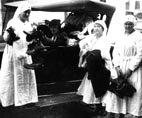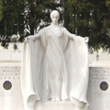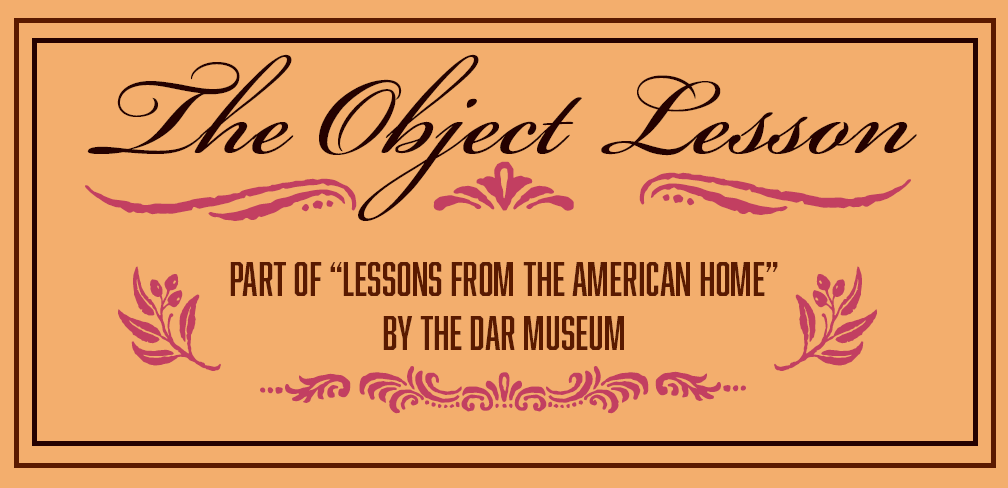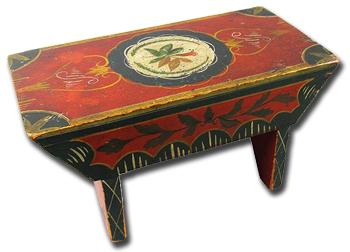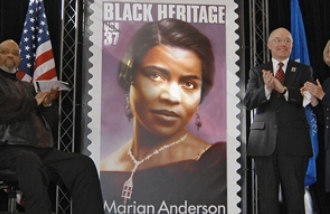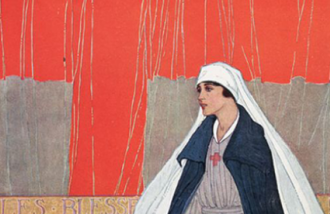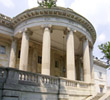Lessons from the American Home
The DAR Museum uses the tenants of material history and public history to show students how primary objects and art combined with secondary sources and primary documentary sources create a nuanced understanding of American history. The students learn how to leverage a wide variety of material evidence to make interpretations about American culture, from conceptions of sex and gender, to economic issues, to the impact of chattel slavery. The critical thinking required in these lessons creates an analogue to historical work and research that prepares them to participate in the information overload era we inhabit.
All the necessary primary and secondary sources are included - so no assembly is required.
The Lessons from the American Home are constantly evolving with input from museum professionals, academic historians, educators, and students across the nation. Educators can use our materials in the classroom and beyond to enforce fundamental skills and supplement the usual political history curriculum with the important context of how Americans lived and survived straight from relevant primary sources.
Note: For programs suited for elementary age students, see “Coloring the Museum” below.
Please send feedback and questions to [email protected]
Lessons from the American Home: FULL Lesson Plans
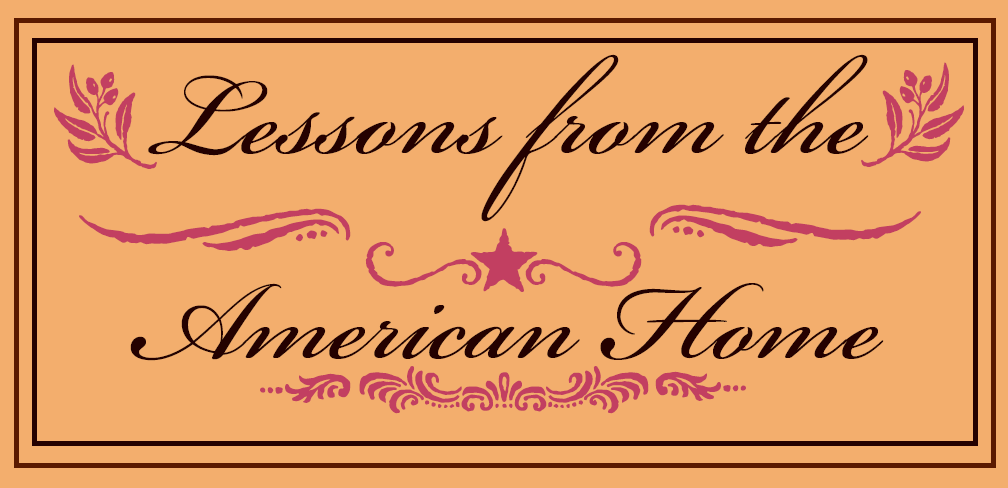
“Better Than Boxed”: The Historic Cost of Cake
- Using economic data, an historic recipe, historic newspapers, and secondary sources, this program looks at how much it cost to make a cake in the 19th century, both its total value, its inflated value compared to the 21st century, and its relative cost compared to incomes. With a wide range of sources, students leverage basic math and economics in tangent with historical thinking skills to understand the history and culture around cake and sugar consumption.
“Out of Many, One”: How to Research Primary Objects
- This program serves two purposes: to demonstrate for students how to use online museum collections databases for historical research and how to use primary objects and secondary sources to develop evidence-backed interpretations of history and historic objects. This short research project covers a wide range of topics that look at historic commemorations of George Washington, women’s history and property ownership, and the resistance of Black Americans against chattel slavery.
- The DAR Museum houses over thirty period rooms that depict historically modelled spaces from 1690 to 1930. This fun game lets players create their own period room using assets straight from the museum: wallpaper, light fixtures, desks, paintings and more. Period rooms are unique and controversial instances of historic interpretation. Through this program, students will understand the value and pitfalls of period room interpretation, while using their own creativity and reading skills to develop a period room that suits their unique style.
“A House Divided”: Chattel Slavery in the American Home
- The DAR Museum collection consists of tens of thousands of historic objects. Nearly all of these objects were owned by elite white Americans. Traditionally, these objects were used to tell elite white stories. But many of these objects were cared for by, made by, used by, or made from materials harvested by enslaved Black Americans. This critical program looks at chattel slavery in domestic spaces, and how an object as seemingly boring and benign as a lacquered tray reveals the real violence inherent in the American system of slavery.
Lessons from the American Home: Short Lesson Plans
These lessons are meant to be used as a warm-up or exit-activity (up to fifteen minutes). For different formats please email [email protected]. New additions to come regularly.
Object Lessons: Inspired by pedagogy from the 19th century, these lesson plans start by having students examine a photograph of an historic object. With facilitation from the lesson plan and educators, students are encouraged to use apt descriptive language to note every detail about the object. Then, students use their reasoning skills to determine how the form of an object suits its function, like what does the loop on top of a pocket watch provide for its user? Then students compare the object to other objects like it: how does a pocket watch differ from a wristwatch? A grandfather clock? A clocktower? A smart watch? Finally, students are given a set of primary and secondary sources that explore the object’s unique history and often contains a twist sure to surprise or shock students. These lessons facilitate a deeper understanding of historical objects and their relations to documentary sources, as well as preparing students to be more critical consumers of American material history.
- “The Watch” – a silver pocket watch with a tale that stretches back to the terrible winter at Valley Forge (19th century)
- “The Medal” – a commemorative medal that depicts George Washington in a way rarely represented (late 18th/early 19th century)
- “The Container” – a container with a very specific, but not obvious use (late 19th century)
Art Lessons: Like the Object Lessons, Art lessons use a historic artwork from the DAR Museum collections in conjunction with secondary sources. Students follow the same steps, but altered to suit the new medium: What was the intended audience for this piece? What message is it trying to convey? What symbols does it use to communicate that message? More than just a visual aid, the Art Lesson leverages sources to help students grapple with a more nuanced and complicated depiction of American culture.
- “The Emery Children” – this portrait of the four Emery Children focuses on childhood and historic conceptions of gender (mid 19th century)
- “The Bird’s Nest” – this 19th century craft project reveals a unique way Americans mourned and catalogued their loved ones
- “The Lincoln Family” – students distinguish fact from fiction using a historic print (1860s)
"Coloring the Museum": Short Activities for Elementary Age Students
This series of short activities is a great way to supplement the historic knowledge of students in elementary school, clubs and after school programs, home school, libraries, and more. “Coloring the Museum” takes real historic objects from the DAR Museum and turns them into coloring activities. Each piece is presented along with a short description as well as the item’s catalogue number and a link to our online collections database. Curious students and adults can look up the item online for more information and discover thousands of other historical objects. We hope these activities will add depth to young students’ historical knowledge and vocabulary by introducing them to material history sources in fun, bite-sized pieces. This is an ever-expanding roster of objects that include historic clothing, toys, samplers, ceramics, and quilts.
Please send any questions or feedback to [email protected].
- The Coffee Giver – A portrait from 1732
- Dress 1863 – Fashion at the height of the American Civil War
- Dress 1815-1819 – Fashion in the Federal Period
- Posset Pot – A unique colonial drinking container from the 1690s
- Rawlings Sampler – A learning project from a young girl in the 1700s
- Star Quilt – A handmade quilt from the 1870-1890s
- Surrender of Cornwallis – A print from 1845 depicting the legendary surrender of Cornwallis to General George Washington at Yorktown
- Teddy Bear – A teddy bear manufactured between 1920 and 1925, the year before the debut of Winnie-the-Pooh
- Reading the Emancipation – A print of Lincoln reading the Emancipation Proclamation to his cabinet, 1863
Virtual and Recorded Lectures and Educational Programs
The museum offers regular free lectures on the second Tuesday of every month. While offered live/virtual around noon, these lectures are often recorded and put up on YouTube.
- Click here to check our schedule for upcoming Tuesday Talks.
- Click here to explore our YouTube channel.
Legacy Programs
- Portable Education Programs – Let part of the museum come to you!
Short Activity Plans:
- Exploring Nature BYO Botany Book (all ages)
- Historic Fashion CYO Stick Figures (all ages)
- Preserving Memories CYO Memory Box (all ages)
- Preserving Family Histories CYO Family Tree (Grades K-5; Girl Scout Brownies)
Lesson Plans:
When the Revolution Comes to Town: What was it like to be an ordinary person who lived through the American Revolution? Elizabeth Drinker was a Quaker woman who lived in Philadelphia when the Revolution began. Her diary records her observations of the events, as well as some sharp opinions! Students watch a 12-minute video narrating her diary entries, then participate in a selection of activities and lessons.
- When the Revolution Comes to Town: Grades 5-8
- When the Revolution Comes to Town: Grades 9-12
- Card Game - The Revolution at Home (Grades 5-12)
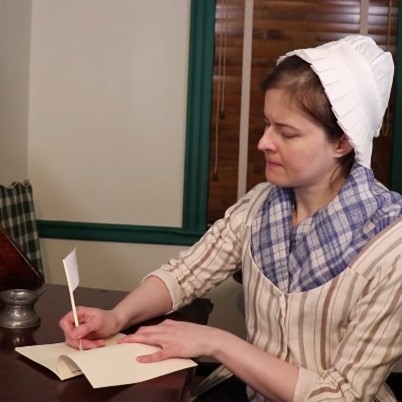
Teacher Object-Based Learning with the DAR Museum's North Carolina Sampler (Grades 5-8): This lesson uses close-looking strategies to help students appreciate the value of objects in learning about history.
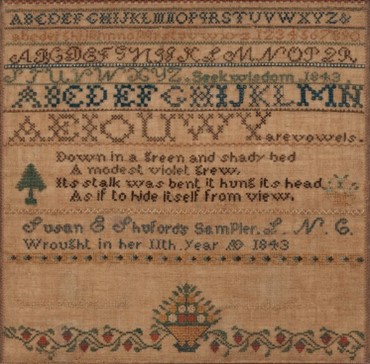
Inspiring Change: Women's Education in the 19th Century America (Grades 8-12): Explore female education and its improvements which lead to the Women’s Rights Movement in the 19th century. Using an object-based exploration strategy to facilitate conversation, educators can demonstrate how objects may be used as primary sources for understanding history.
- Introduction and Teacher Guide Provides instructions on how to use this guide, Common Core Standards, and a historical overview of the topic.
- Lesson 1: How do society’s expectations influence education? This lesson looks at the early curricula of female education and explores what the societal expectations of women were at the time.
- Lesson 2: How do we determine the value of education? This lesson considers why education is a valuable asset for empowering individuals and looks at an example of early advocacy for improved women’s education.
- Lesson 3: What makes attitudes towards education change over time? This lesson shows examples of progressive female education in the 19th century and explores some of the obstacles women faced in obtaining their rights.
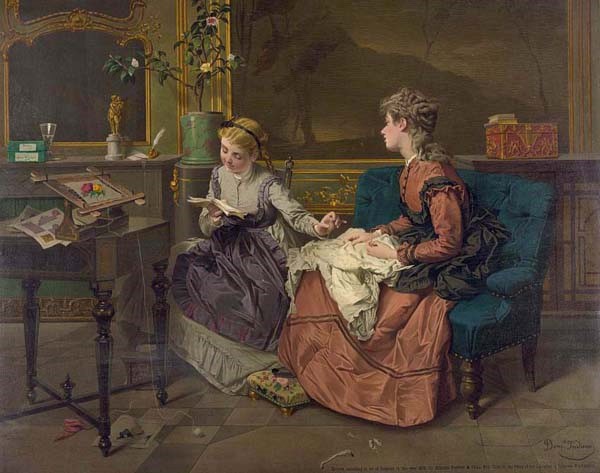
School Museum Visits
The DAR Museum is developing new on-site activities and is reviewing the possibility for field trips with younger students. If you are an educator or run a youth group/after-school program, please contact [email protected] with any questions or suggestions. Self-guides are available below for grades 4-8.
Hours, Directions, and other useful information
We would be happy to print our school self-guides to have available for you; please contact the museum at least 1 week in advance of your visit so we know how many to print. You are also welcome to view and print the self-guides in advance.
The DAR building cannot comfortably accommodate more than 100 people at a time. If you have any questions about the facilities, please contact the museum.


